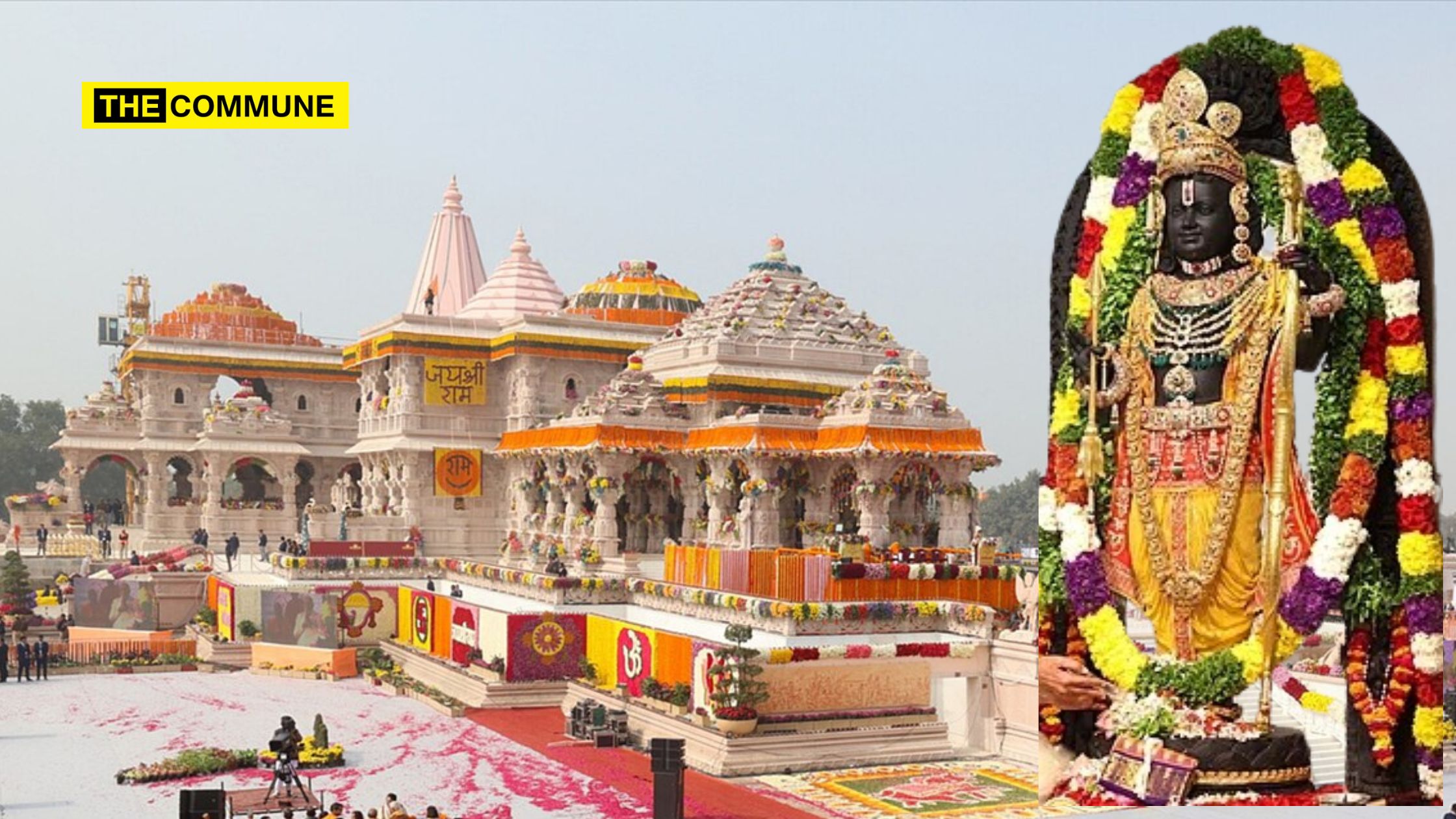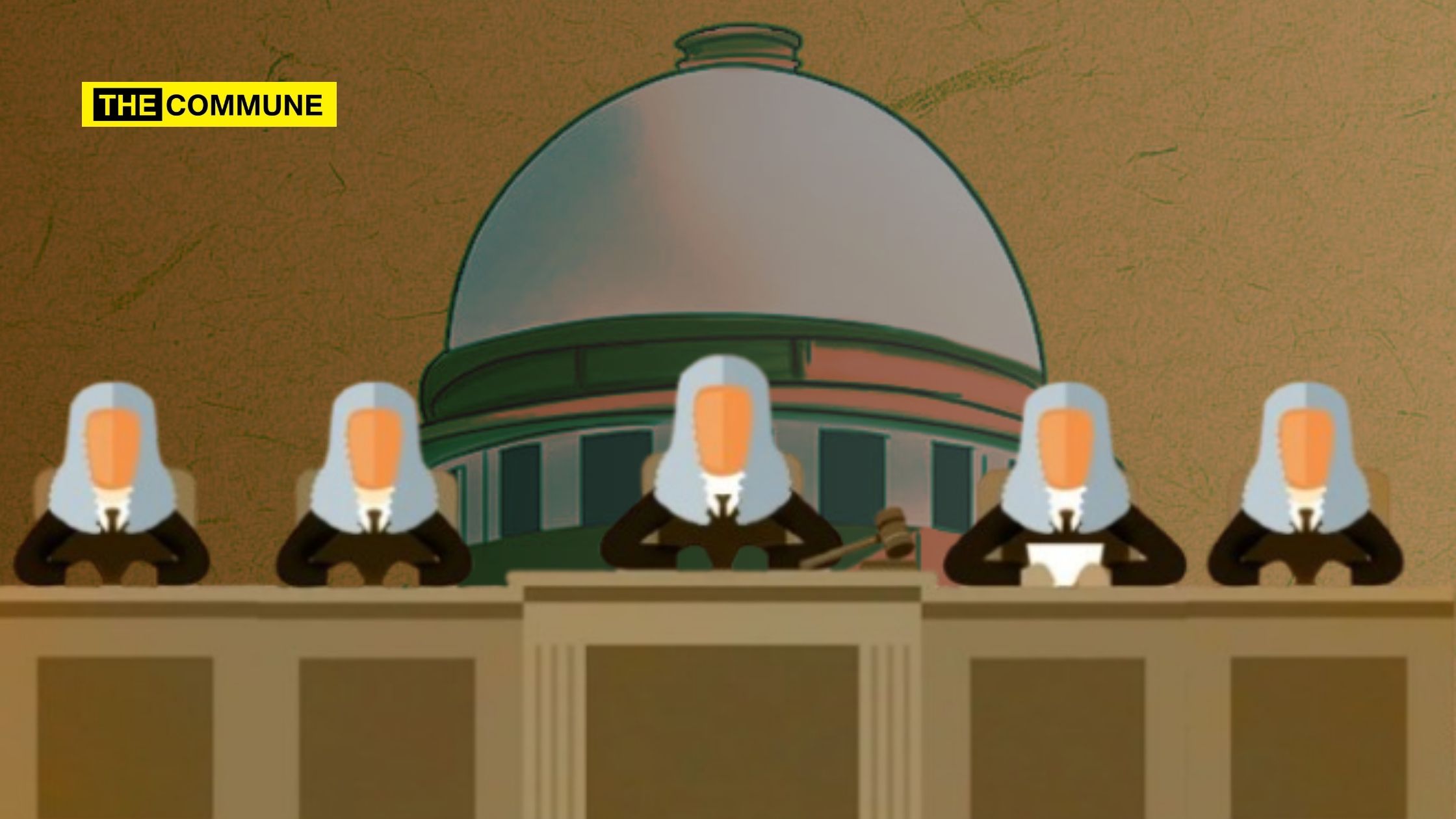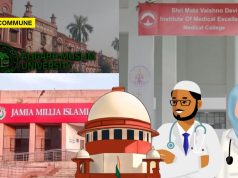
A birth is a time for celebration. The birth of a king, even more so. How about the birth of a God? Throughout the world, many civilisations have celebrated the birth of their Gods and the places they were born. That is also the story of Bhagavan Shri Rama and his Janmabhoomi (birthplace).
I was blessed with an invitation to the Pran Prathistha on the twenty-second of January. My initial astonishment at this blessing soon gave way to a festive mindset and by the time I started my journey from Chennai, I was in a full-blown celebratory mood. The saffron-clad sadhus who were my co-passengers, the numerous cutouts of Prabhu Rama in public spaces and the auspicious greeting of “Jai Shri Ram” that echoed in all conversations, bloomed a Diwali-like feeling in me. By the time I reached the welcoming arches of Ayodhya in the early hours of the day before the consecration, I was all but shaking with excitement.
As the fog gave way to the morning, the garlanded roads of the city, the bells from early morning darshan, and the smell of sweet tea from roadside chaiwallas greeted me with a joyful energy. Smiles and laughter hung on every single face. String lights and saffron flags hung from every single building. The soulful sounds of bhajans like “Ram Ayenge” reverberated through the air. My heart felt full and my feet light even as I lugged my duffle bag through little side streets to a small guest house; one of many which had opened the previous month in anticipation of the flood of devotees.
My first point of call was to the Janmabhoomi itself. I knew it was closed and in preparation for the next day’s events, but I had to go see for myself that place which so many had celebrated and sacrificed for. I wasn’t alone in my curiosity; hundreds had decided to visit the Janmabhoomi despite it being closed. We all stood together outside the gates and gazed up at florists busily hanging flower arrangements in place and awed at the expanse of the new driveway, the “Janmabhoomi Path”, that led up to the temple. Security personnel gazed back at us, their presence a grave reminder of what had passed before on this land. Unfortunately, Ayodhya which means “a place of no war” has witnessed much conflict. Countless souls have helped to carve a way for the events the next day. Some had moved pebbles, others mountains; they had tirelessly kept moving the issue for five hundred years and that is all we needed for the chance of a breakthrough: the chance for tomorrow.
But where was the temple? However much I craned my neck, I couldn’t spot the temple, not its capstone nor the sparkle of a flagstaff. As I walked away from the mass of people, I laughed at my own childish disappointment: our civilisation had waited a half millennia for this temple, and I could not wait for tomorrow!
Rama’s most ardent devotee can be found at the Hanuman Garhi Temple, a mere five-minute walk from the Janmabhoomi and that is where I headed next. The space was electric. Fellow devotees thronged the forecourt at the base of the temple. They welcomed us with Chandan and Kumkum, and friendly police officers guided us up the steps to the temple. As I squeezed through the crowds, it dawned on me how minuscule I was in the big picture. The bhaktas around me were the ones who kept Rama in their hearts, who fought for Rama, and for whom Rama was everything. I could see a unified spirit of fulfilment rising amongst the crowd even as they jostled each other around. Was it a coincidence that I felt this boundless devotion for Rama and all his followers at a Hanuman temple? Or was this what everyone was feeling? Affection for a stranger is an odd state of mind, but as I walked back down the steps of the temple, I couldn’t help but feel connected to the people around me and I couldn’t help but smile candidly at everyone, even if they looked back quizzically.
The volume of individuals around Ayodhya was truly astounding and so were its temples. Like seeds scattered over a field, temples can be found all over Ayodhya. Each temple had its own story, its own place in history, and something unique to awe at. Temples for Sitaji, Kaliji, Shivji, Ganeshaji, Hanumanji, and of course, Rama were nestled into every alley and they all had an infectious energy about them. I stumbled across countless Mathas and pop-up pandals too; all alive with prayer, kirtan, Ramayana recitation, or yagna. One particular yagashala that I had the fortune to visit held 1008 yagnas simultaneously. The structure was incredible: it was huge, traditional styled, and surprisingly smoke-free. I found myself congratulating our ancestors for achieving both beauty and function in all spaces. The more I walked around the city, the more there was to see and the more there was to reflect upon.
Watching everyone busy in their practice made me ponder over the power and the strength of faith. I introspected on my own faith as I walked through narrow snickets lined with old buildings, some quite tired and in need of repair, nonetheless all dressed with bright garlands and flags. The walls around me suddenly gave way to the sky and I found myself upon the banks of the mighty Sarayu River. The chill of the evening became apparent as I walked along various bustling ghats of the river to an area brightly lit with thousands of diyas and loud with life. The Naya Ghat with its water-filtering pump house and broad walkways is superbly designed and immaculately kempt. It certainly makes for easy access to the Sarayu’s waters and is a more palatable space for those with sensitive dispositions. Various media stations had set up along one side of the ghat and several interviews and debates were in full flow.
Some stood in the water deep in prayer whilst others splashed about merrily. It is said that you can never step into the same river twice: time and water carry only memories and the promise that they are ever-changing. The scene around me was a testament to that. I took my turn to step into the waters and mumble my shlokas, thanking the waters for blessing us with life, connecting us to each other, and for washing the land so that something could grow afresh. By late evening, I felt tired in my bones. My extensive trek around the city, the chill of the winter winds, and the hot aloo parathas that I had wolfed down, each did their part to put me into a quick and deep sleep. I’m told that the little city of Ayodhya (population around eighty thousand) managed to create 1200 rooms ahead of the consecration and miraculously housed an extra 1,50,000 people that night! But whether anyone slept for long that night is debatable.
On the morning of the Pran Prathistha, the sounds of divine bhajans woke me early. I couldn’t get ready fast enough. I gathered my essentials and ran through the crisp morning air to the Janmabhoomi. Cars stood bumper to bumper along the main road; a slow but sure procession inching its way towards the action. To say that security was tight would be an understatement. Policemen stood at posts twenty metres apart, diligently checking IDs and invitation cards. Few people managed to make it through the checkpoints and I felt a mixture of gratitude and the guilt of privilege as I was let through. The gates of the Janmabhoomi Path were much calmer than I expected: security protocols had worked some. I entered through the first gates quickly as machines verified my pass and finally stepped onto the Janmabhoomi path. The next few hundred meters were a blur. All the invitees walked fast through two more security checks and a bag scanner before meeting a wave of volunteers. These men and women laughed, danced, hugged us, and chimed “Jai Shri Ram” as they painted our foreheads with tilak and draped us in artfully embroidered yellow scarves. Volunteers removed our footwear insisting we should not touch our shoes and rosewater was sprayed onto our hands. The attention and respect for us as guests was overwhelming. Every detail had been considered with care. We crossed a final barrier and climbed up a small stairway only to glance up and see a most stunning structure rising up and around
us.
The size of the temple was hard to fathom at first glance. It looked both huge and modest from afar, but as I got closer, its gargantuan nature became indisputable. Colourful flowers adorned every window sill, every balustrade, and every roof line. Its stairways were festooned with floral peacocks, masts with saffron flags, and all surfaces embellished with carvings that drew one’s eyes in further. The grandeur of the edifice before me along with the hum from eager devotees set the scene for the momentous day ahead. Guides showed us to our allocated zones and we all peeped about trying to catch a glimpse of A-listers before settling into our seats. After brief introductions with my neighbours, there were but moments before the musical delights of the day proceeded, and what a day it proved to be!
Describing the Pran Prathishta ceremonies is almost redundant. Whether at the Janmabhoomi or in various corners of the world, thanks to superb live-streaming services, all of us could see and feel the first puja together. I know from subsequent conversations that so many of us, on first seeing him, admired our Ram Lalla through joyful tears. From the sacred patch of earth that I stood on, I could feel everyone come together as one. Hindus all over the world prostrated in front of Ram’s form, they danced and sang his glory that day. And they posted it all on social media. The innumerable statements of joy and pride shared on posts globally demonstrated, without doubt, the unifying omnipresence of Ram. The congratulations that poured in from friends and well-wishers was further evidence of this
divinity’s potential to unite.
The puja and the brilliant speeches that followed set the celebrations to fever pitch. As a blizzard of rose petals fell about us, we opened our arms up to the sky the way one opens up to hug a loved one. We chanted in unison and shared sweets. Then, we all waited in earnest for our zone to be called and our turn to see Ram Lalla face to face. As I made my way up the steps of the temple and through the various mandapas, I was astounded by the magnificence of the space. From this height, one could appreciate the vastness of the temple complex and the scale of the temple itself: it was humbling. The grand archways and intricately carved domes were bedecked with flowers of every kind and echoed with bhajans and shlokas. Despite the many unique sculptures and carvings to gape over, we queued impatiently. The large, exquisitely forged golden doors that stood ahead were all that stood between us and the main sanctum that housed the divine Murti of the young Rama.
When I finally had my chance to gaze up at the eyes of Ram Lalla, I was calm and in quiet adoration. I could only marvel at the beauty of his countenance and smile back as he smiled at me.
The stream of devotees that I was a part of moved me along quickly and in what felt like the blink of an eye, I was outside again. Small groups had gathered in conversation and all exclaimed at how familiar Ram Lalla looked, how proportionate his features were, and how he glowed. I know not what I thought during my time in the sanctum of Shri Ram. But I felt energised, the way one does after a long and restful sleep. My mind was jubilant and light. Whether it was group mentality or an odd mix of biochemistry I cannot say, but I was feeling a serene contentedness.
This happy high stayed with me as we all filtered out of the temple and back down the Janmabhoomi Path to the main road. It was late and the sky dark but a determined mass of people had collected outside the gates and it was nothing like I had ever witnessed before. News reports from that evening would state that more than five lakh people had been waiting to be allowed into the temple. This was bhakti true and pure. The roads were filled with music and processions that night. As I drove out of Ayodhya, I could feel the rhythm of devotion and I prayed that all my brothers and sisters would have as wholesome a darshan as I had been blessed with.
The Pran Prathistha marks a turn in time. Ayodhya has seen many empires come and go but the original history embedded in its soil has stood the test of time. The emperors who razed its hallowed buildings and the generals who chopped down its cherished trees could not squish the indomitable spirit of Ram we have carried in our hearts.
Hinduism, spread across the vast subcontinent of Bharath, is diverse and dynamic. Its followers have over millennia developed their own styles of prayer and gravitated towards their favourite avatars of the Brahman. However, all of us know Lord Rama. He who is synonymous with righteousness, he who overcame all struggles guided by dharma, he who as a son, brother, husband, father, and lord loved and is loved. We all know his story. We have all uttered his name. Is it any surprise that his divinity has the power to bring us together?
The Janmabhoomi and the reconstruction of a temple on this sacred patch of earth represents today more than a place of birth. It shines like light over darkness, as a testament to the fact that truth invariably triumphs, dharma always prevails, and that justice will find its place in history; just as karma does in the time continuum. In short, this place is hope. Hope that is to be shared by all of us…“everyone”. We call this hope “Rama”.
Vandhana is a medical doctor who is passionate about history and culture.
Subscribe to our channels on Telegram, WhatsApp, and Instagram and get the best stories of the day delivered to you personally.




